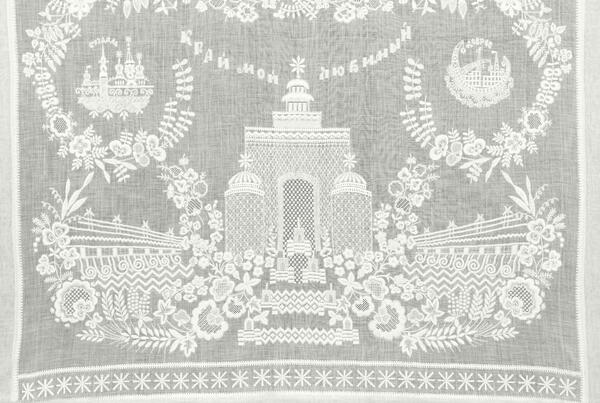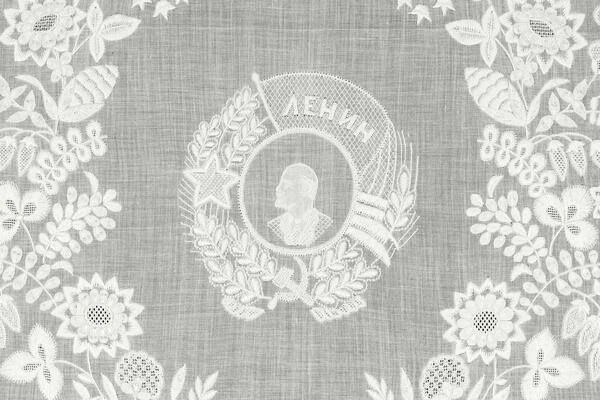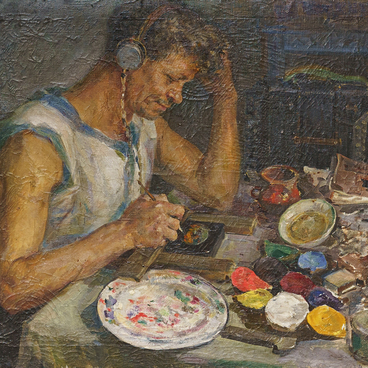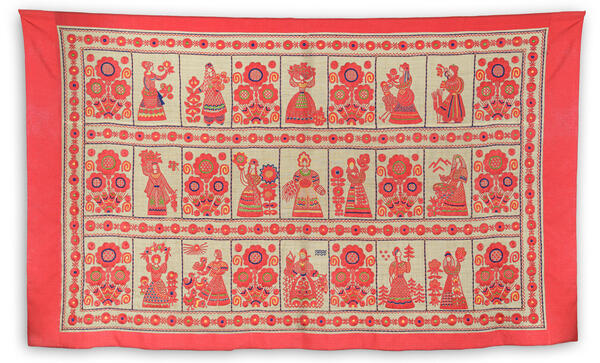Mstyora whitework is a form of embroidery traditionally worked with white thread on white fabric (for example, on cambric or marquisette). Skillful Mstyora craftswomen achieve a sophisticated play of white color and its various tones, which allows to create convex patterns that vary in texture. Patterns of flowers and leaves forming garlands, wreaths, twigs and bouquets are typical for Mstyora embroidery.
In the post-war years, the artist Tatyana Mefodievna Dmitriyeva-Shulpina (1913–1999) discovered a new direction in Mstyora embroidery. In her works, she depicted the country’s most important events and achievements in various fields of culture and national economy: the opening of metro stations, space exploration, and grandiose construction projects.
The panel “My Beloved Land” is made of white marquisette and embroidered with white thread. It features depictions of significant events and sights of the Vladimir region. In the center of the composition, Dmitriyeva-Shulpina depicted the Order of Vladimir Lenin: the Vladimir region was awarded the Order in 1967 the “for the successes achieved by the region’s workers in the development of the national economy and culture.” To the left and right of the order are symbolic images of the cities of the Vladimir region, enclosed in a frame of stylized leaves, flowers and fruits.
As a village of skilled craftspeople, famous for its traditional artistic crafts, Mstyora is represented in the form of a wonderful Firebird. Just like the feathers of the mythical bird glow brightly, so does Mstyora with its lacquer miniature paintings, hand-embroidered designs and artistic metalworking. Below Mstyora is Gus-Khrustalny, a town renowned for its glass industry, whose history dates back to the 18th century. That image is followed by Suzdal, one of the oldest cities in Russia.
On the right side of the panel, the artist
embroidered a milkmaid with a cow which symbolizes the town of Vyazniki: there
were many farms on the territory of the Vyaznikovsky district where beef and
dairy cattle, pig and sheep were bred. Below is the Ilya Muromets armored
train, built in 1941–1942 by railway workers of the Murom branch of the Gorky
Railway. It symbolizes Murom, the homeland of the legendary hero Ilya Muromets.
Kovrov, the city of military glory and the second largest city in the region
after Vladimir, completes the composition. On the lower edge of the work, the
artist depicted the Golden Gate of Vladimir with tractors leaving though it. To
the sides of them are hydroelectric power plants.






